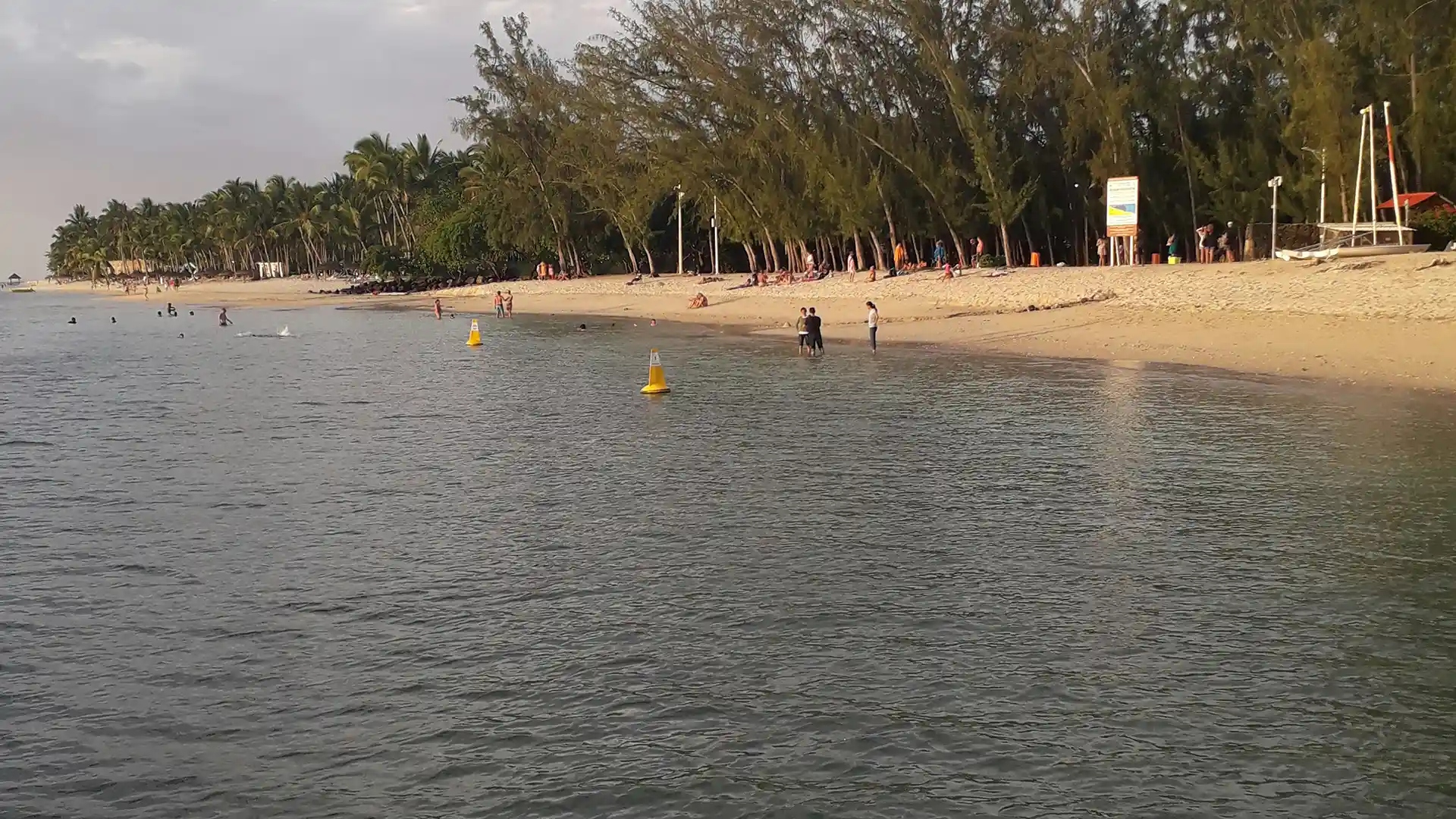Experience Breathtaking Mauritius
Experience Breathtaking Mauritius Mauritius
About Mauritius
Mauritius, an island paradise in the Indian Ocean off the southeastern coast of Africa, is celebrated for its breathtaking natural beauty and vibrant cultural heritage. This idyllic destination boasts diverse ecosystems, from lush tropical forests and vibrant coral reefs to pristine beaches and turquoise lagoons, making it perfect for nature lovers and adventure enthusiasts. The island is home to unique wildlife, including the pink pigeon and the Mauritius kestrel, found nowhere else on earth. Mauritius’s rich cultural tapestry, influenced by African, Indian, Chinese, and European traditions, offers captivating experiences through its historical sites, bustling markets, and local crafts. Travelers can enjoy activities like hiking in the scenic Black River Gorges National Park, snorkeling in Blue Bay Marine Park, or relaxing on the white sands of Belle Mare Beach. Mauritius promises an adventurous, breathtaking, and thrilling experience, making it an unforgettable destination for every traveler.
Mauritius, an island nation in the Indian Ocean, has a rich history shaped by various European powers. The island remained uninhabited until the early modern era when the Portuguese first visited in the early 16th century. However, it was the Dutch who claimed the island in 1598, naming it Mauritius after Prince Maurice of Nassau. They introduced sugar cane and deer to the island but abandoned it in 1710 due to harsh weather and challenging living conditions.
In 1715, the French took control of Mauritius, renaming it Île de France. Under French rule, the island’s plantation economy flourished, driven by sugar production. The French imported enslaved Africans to work on the plantations, significantly impacting the island’s demographic and cultural landscape. Port Louis, the capital, developed into a major port and naval base, enhancing Mauritius’s strategic importance in the Indian Ocean.
During the Napoleonic Wars in 1810, the British captured Mauritius, and it was formally ceded to Britain in 1814 under the Treaty of Paris, reverting to its original name. The British expanded the sugar industry and, following the abolition of slavery in 1835, brought in indentured laborers from India. This influx of Indian laborers had a profound influence on the island’s culture, religion, and cuisine, adding to its rich cultural mosaic.
In the 20th century, Mauritius experienced significant political changes, moving towards self-governance. The island gained independence from Britain in 1968, with Sir Seewoosagur Ramgoolam, a pivotal figure in the independence movement, becoming the first Prime Minister. Following independence, Mauritius established a stable political system and diversified its economy beyond sugar, focusing on textiles, tourism, and financial services.
Today, Mauritius is known for its economic stability, democratic governance, and ethnic diversity. The historical influences of European colonization, African slavery, and Indian indentured labor have created a unique cultural mosaic. Mauritius continues to thrive as a melting pot of cultures, offering a blend of traditions, languages, and cuisines that reflect its complex historical journey.
Geography
Mauritius, a tropical paradise in the Indian Ocean, lies about 2,000 kilometers off the southeastern coast of Africa, east of Madagascar. The island is part of the Mascarene Islands, along with Réunion and Rodrigues. Covering approximately 2,040 square kilometers, Mauritius boasts a varied topography due to its volcanic origin. The central plateau, ranging from 400 to 600 meters in altitude, is surrounded by mountains, including the island’s highest point, Piton de la Petite Rivière Noire, at 828 meters. The island’s lush landscapes and diverse flora and fauna are a testament to its volcanic heritage.
The coastal plains of Mauritius extend to its famed white sandy beaches and coral reefs. These areas are the main tourism hubs, with the northern region known for its beautiful beaches and vibrant atmosphere, and the east coast offering long stretches of pristine coastline. The southern and western coasts feature dramatic cliffs and rugged landscapes, ideal for surfing and exploring. Additionally, Mauritius includes several smaller islands, such as Île aux Cerfs and Île aux Aigrettes, which provide unique experiences and natural beauty, making them popular day-trip destinations.
Climate
Mauritius enjoys a tropical climate, with warm temperatures and high humidity year-round, influenced by its Indian Ocean location. The island experiences two main seasons: a hot, humid summer from November to April and a cooler, drier winter from May to October. Summer temperatures range from 25°C to 33°C (77°F to 91°F), with January and February being the hottest months and occasional cyclones. This season also sees heavy rains and thunderstorms, contributing to the island’s lush vegetation.
Winter in Mauritius is cooler and drier, with temperatures ranging from 17°C to 25°C (63°F to 77°F), and July and August being the coolest months. Despite the cooler season, there is still plenty of sunshine and warm temperatures, perfect for outdoor activities. The trade winds from the southeast provide a refreshing breeze, especially along the coast. Rainfall varies across the island, with the central plateau and eastern parts receiving more rain compared to the western and northern regions. The wettest months are from January to March, while the driest months are from September to November.
In Mauritius, the linguistic landscape paints a colorful portrait of the nation’s cultural diversity. Officially recognized languages include English, French, and Mauritian Creole, each contributing to the linguistic journey that awaits you.
English and French, remnants of the island’s colonial history, hold significant roles. English serves as the primary language for official and administrative purposes, while French adds a touch of elegance to the cultural milieu. In your travel interactions, you’ll find a harmonious blend of these two languages, creating a linguistic tapestry that reflects the historical layers of Mauritius.
Mauritian Creole, a vibrant and expressive language born from the fusion of various influences, is the heart and soul of everyday communication among locals. As you navigate through the island’s markets, engage with the warm-hearted locals, and immerse yourself in the day-to-day rhythm, the nuances of Mauritian Creole will add a distinctive flavor to your journey.
Beyond these three official languages, the linguistic diversity expands further. Bhojpuri, Hindi, Tamil, Urdu, and Mandarin find their place in the linguistic mosaic, echoing the island’s multicultural essence. Each language encapsulates a piece of Mauritius’s history, a testament to the diverse origins of its people.
In urban centers, a significant portion of the population exhibits a functional command of English and French, enhancing your travel experience as you navigate through markets, engage in conversations, and explore the rich cultural heritage.
As you journey through Mauritius, the multilingual prowess of its people becomes evident. The fusion of languages creates an environment conducive to cultural immersion, fostering connections and enriching your travel encounters.
Getting In
Mauritius warmly invites visitors from around the world, eliminating the need for visas. This applies to a variety of nations, fostering a seamless entry experience. Nations like Seychelles, Comoros, Madagascar, and many others share in this commitment, ensuring an easy start to your island adventure.
Discovering Mauritius’ Accessible Routes:
By Car: Embarking on the roads of Mauritius offers an adventure of its own. Main roads are typically well-paved, providing a smooth journey, while secondary roads, particularly outside urban areas, may be less refined. Road enthusiasts can effortlessly connect to neighboring destinations – Rodrigues through Port Louis, Reunion via Grand Baie, and Agalega through Mahebourg. It’s a road explorer’s paradise!
By Plane: Mauritius Airlines, the island’s pride and a leading carrier, offers comprehensive regional and international connections. Soar to destinations like Johannesburg, Paris, Dubai, Delhi, and Beijing for an unmatched travel experience, immersing yourself in the global rhythm.
By Bus: Ideal for budget-conscious travelers and those yearning for scenic views, buses provide an affordable and picturesque mode of transportation. Routes cover key towns and attractions, creating an opportunity to absorb the vibrant Mauritian culture along the way.
By Boat: Limited yet delightful options include boat journeys along the island’s azure waters. Explore the northern islands like Île aux Serpents or venture to Île aux Aigrettes for nature encounters. Coastal delights, such as Grand Baie to Île aux Cerfs cruises, offer a unique perspective of the island’s beauty.
Getting Around
By Air: Commencing your journey in Mauritius often involves landing at Sir Seewoosagur Ramgoolam International Airport, a bustling gateway connecting the globe to the heart of this island paradise. Navigating the island’s traffic to reach the airport may require allocating at least two hours for your commute. The main road leading to the airport is susceptible to occasional traffic congestion, and security checks demand patience.
By Road: Mauritius’ network of roadways invites travelers to embrace the scenic routes. Opt for reputable bus companies for a comfortable journey, especially on highways where the speed is regulated. Brace yourself for a potentially winding and picturesque adventure through the landscapes.
By Minibus: The lively pulse of local transport, minibuses, privately operated vans, offer a budget-friendly and nimble way to traverse major towns and rural areas. With capacities varying, minibuses follow established routes, ensuring swift and efficient service.
By Rental Car: Explore Mauritius at your own pace by renting a car from globally recognized agencies on the island. Alternatively, local distributors provide cost-effective options, but due diligence is crucial before securing your vehicle. Document any pre-existing damages to avoid complications, especially when dealing with a “refundable” deposit.
By Boat: Mauritius’ coastal delights offer an alternative journey. Limited yet delightful options include boat transfers to neighboring islands or exploring the island’s pristine waters on private charters.
By Train: While Mauritius does not have a well-established passenger train system, there are plans for future development, heralding a potential new era in rail travel.
Experiencing the journey through the diverse landscapes of Mauritius introduces you to a unique financial tale told by the currencies circulating through markets, cultural hubs, and enchanting landscapes.
Mauritian Rupee (MUR): The Financial Maestro As the financial maestro of Mauritius’ local transactions, the Mauritian Rupee (MUR) takes the center stage. Its colorful notes and coins effortlessly guide you through the daily rhythm of exchanges.
US Dollar (USD): In places designed for travelers, the US Dollar becomes a trusty sidekick, providing an additional means of payment. Whether booking accommodations or exploring tourist attractions, having a few dollars at hand adds convenience to your journey.
Euro (EUR): Occasionally stepping into the spotlight in select venues and international spheres, the Euro plays a role in Mauritius. However, its acceptance may vary, prompting the need to inquire about its welcome in specific areas.
British Pound (GBP): Found in upscale establishments and international arenas, the British Pound makes a brief appearance among the accepted currencies. Always confirm its embrace before initiating any transactions.
Credit and Debit Cards: Unlocking urban convenience, major credit and debit cards, especially Visa and MasterCard, elegantly glide through card readers in hotels, restaurants, and larger businesses. However, in more remote corners where card facilities may be elusive, the wisdom of carrying some cash prevails.
Unveiling Mauritius Beauty
General Knowledge Base
General information about Mauritius.
Mauritius is a small island nation located in the Indian Ocean, east of Madagascar.
The official language is English, but many Mauritians also speak French and Creole.
The capital city is Port Louis, which is also the largest city in the country.
The population is around 1.3 million people.
The dodo bird, which is now extinct, is the national symbol of Mauritius.
One of the most popular tourist attractions is the Seven Coloured Earths, a natural phenomenon where the soil contains seven different colors.
The traditional food is a mix of Indian, Chinese, and Creole cuisine, with dishes like curries, biryanis, and rougaille.
The main industries are tourism, textiles, and sugar production.




